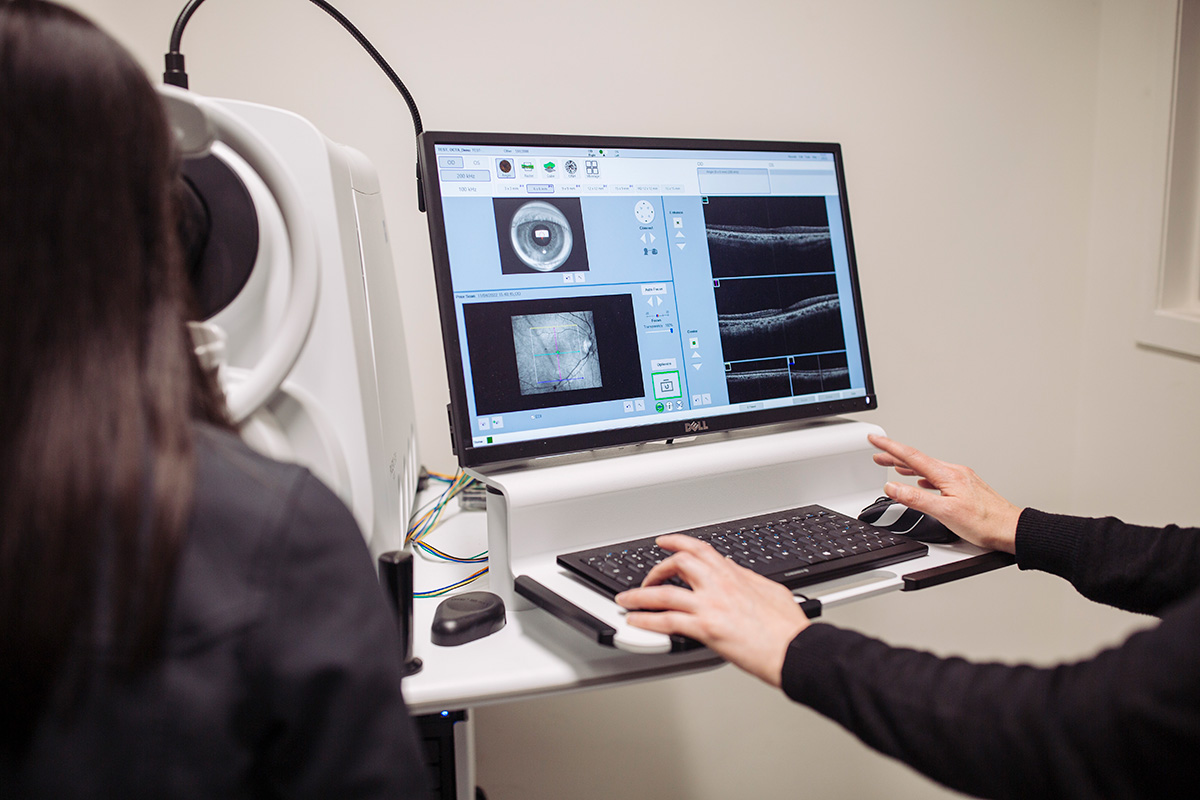This website uses cookies so that we can provide you with the best user experience possible. Cookie information is stored in your browser and performs functions such as recognising you when you return to our website and helping our team to understand which sections of the website you find most interesting and useful.
News
Foundation’s imaging impact
A state-of-the-art imaging device able to see the smallest blood vessels in the eye, purchased with the generous support of the Ian Potter Foundation, will transform CERA’s research program.
A powerful new imaging device capable of seeing how blood moves through the retina will allow our researchers to gain new insights into age-related macular degeneration, glaucoma and diabetic retinopathy.
The Optical Coherence Tomography Angiography (OCT-A) device was purchased with the generous support of the Ian Potter Foundation.
To celebrate CERA welcomed visitors from the Foundation, including Senior Program Manager Dr Alberto Furlan (pictured above with Head of Macular Research Professor Robyn Guymer AM), for an official ribbon cutting.
The device is already having a significant impact on how all of CERA’s research units are working to understand disease.
“The eye is special because it is accessible through traditional optics and can act as a window to the entire body,” says CERA Managing Director Professor Keith Martin.
“Imaging devices like this open a world of new opportunities for us to understand diseases, and we’re already making use of this transformative piece of equipment every day in the clinic.
“The generous contribution of the Ian Potter Foundation to this equipment will make a huge impact on our research program and we are incredibly grateful for their support.”

Close-up focus
OCT-A devices can take an image of the blood vessels that cannot be seen on any other imaging device at CERA.
The device works by using light waves to capture many images of the back of the eye in quick succession, and then compares them to see how blood is flowing through the retina.
By combining and comparing these snapshots the device produces a three-dimensional image of the microvasculature – the blood vessels in the eye – allowing researchers to see which appear normal and which do not.
Before the development of OCT-A the only way to capture this information was by injecting a dye into a person’s bloodstream to watch how it flows.
However, patients need to wait for the dye to circulate throughout their body, making the test a very long process to complete. There is also a risk of a patient experiencing an allergic reaction to the dye.
In comparison, an OCT-A scan is non-invasive, safer, and only takes a few seconds to capture an image.
Blood and the eye
Having ready access to a fast and effective way to visualise blood flow in the eye is expected to accelerate the discovery of new biomarkers for a range of diseases.
Biomarkers are measurable indicators that are used to identify disease – like how blood pressure can be used to monitor the health of the heart.
Identifying new biomarkers can help clinicians find diseases earlier, potentially allowing treatments to be started sooner to preserve vision before it is lost.
New biomarkers can also guide researchers towards potential new treatments.
Changes in blood flow to the retina have already been associated with age-related macular degeneration, glaucoma, Alzheimer’s disease, diabetic retinopathy and some inherited retinal diseases.
Having an OCT-A device available to all researchers at CERA will accelerate research into all of these conditions.
Professor Robyn Guymer AM, CERA Deputy Director, says the Macula Research Unit is just one of the teams already benefiting from the technology.
“This technology has allowed us to pick up abnormal blood vessels in the macula that we cannot detect in any other way,” says Professor Guymer.
“It’s really allowing us re-understand the disease, including how we understand disease progression and possible novel approaches to treatments for blood vessels deep in the retina when they start to bleed.”
The purchased of the OCT-A device would not have been possible without generous grants from the Ian Potter Foundation and an anonymous donor.

